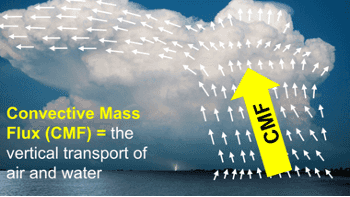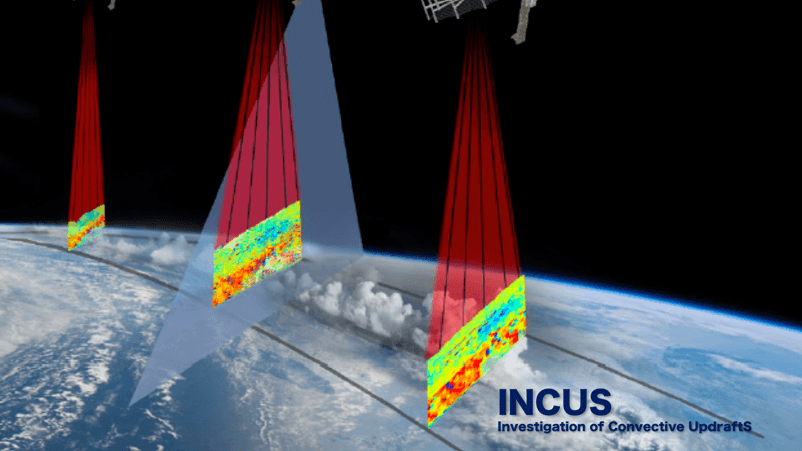INCUS Mission Overview
The goal of INCUS is to understand why, when and where tropical convective storms form, and why only some storms produce extreme weather.

The primary goals of the INvestigation of Convective Updrafts (INCUS) mission are to determine:
- The predominant environmental properties controlling convective mass flux in tropical convective storms
- The relationship between convective mass flux and high anvil clouds
- The relationship between convective mass flux and the type and intensity of the extreme weather produced
Science

Instruments
INCUS is a series of three SmallSats in close succession each carrying a RainCube -like Ka-band radar and one with a TEMPEST -D-like radiometer with cross-track scanning capabilities. A novel time-differencing approach between the three satellites flown in close succession (30, and 90, and 120 seconds apart) will provide the first estimates of convective mass flux across the tropics. More information on the instrumentation can be found on the Instruments page.

Relevance
The INCUS mission directly addresses the critical question “Why do convective storms, heavy precipitation, and clouds occur exactly when and where they do? (W-4)” from the National Academies of Science and Engineering 2017-2027 Decadal Survey.
Scientific Overview Video
Watch Principal Investigator Susan van den Heever describe the INCUS mission and its scientific goals.